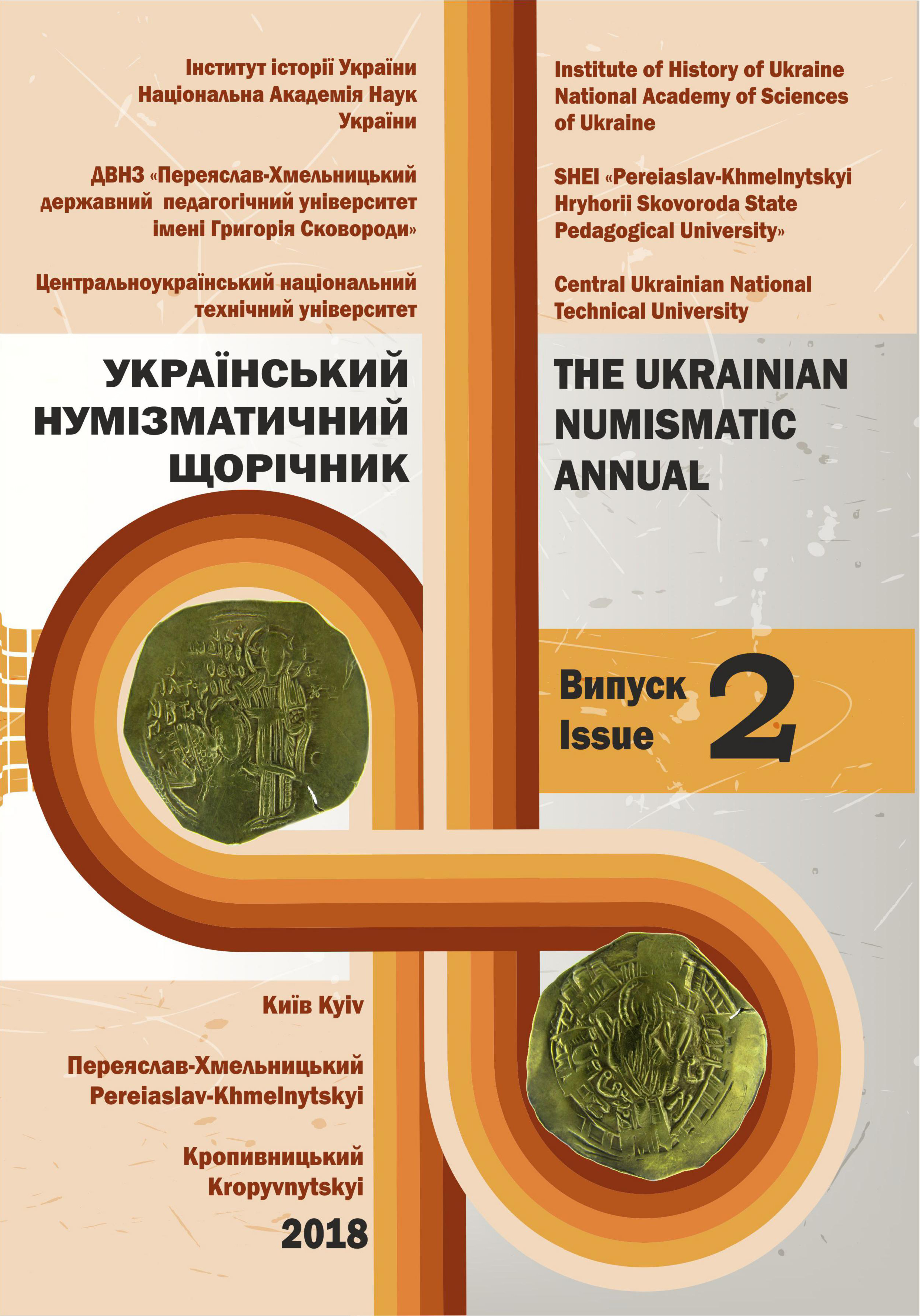ТРИ ФАЛЬШИВІ СЕРЕДНЬОВІЧНІ ЗАХІДНОЄВРОПЕЙСЬКІ ДЕНАРІЇ, ЗНАЙДЕНІ В РІВНЕНСЬКІЙ ОБЛАСТІ
THREE FAKE WESTERN EUROPEAN DENIERS FIND IN RYVNE REGION
Author(s): Sergii KuleshovSubject(s): 6th to 12th Centuries, 13th to 14th Centuries
Published by: ДВНЗ Переяслав-Хмельницький державний педагогічний університет імені Григорія Сковороди
Keywords: Western European Deniers; Fake Deniers; Ukraine; Ryvne region;
Summary/Abstract: Each year the interest to the study of the private counterfeits of coins for a loss of the money circulation increases. The introduction to the scientific circulation of the finds of the coins of X-XIII centuries is, in our opinion, also relevant in the context of the existence in the Ukrainian science of the thought that this time in the history of the money circulation was characterized by the almost complete refusal of the population to use the coin, laid the paradigm of the “Coinless period”. During the last five years, the Internet-resource Violiti has been presented at the Ukrainian numismatic forum for the identification of three coins with identical images. These coins have the same appearance, diameter and weight, all of them are false Western European pennies of the XIth -XII centuries, possibly embossed with the same dies (unfortunately, the poor consistency of coins does not give grounds for such a statement). The condition of these coins is generally unsatisfactional, some of the inscriptions and images are lost. All of the fake Western European pennies were excavated in Rivne region in Ukraine. It is tempting to assume that they could be made here. But until the dies or stamps (matrixes) for minting are found, it will remain a hypothesis. Most likely, they were brought in a certain quantity to these countries by visiting it by merchants from the West (or their own) and distributing them to deceive the local population. Also interesting is the fact of various ways of making a silver layer of these identical images of artifacts. We have analyzed the iconography, palaeography and technology of making of these old coin counterfeits. It is proved that these pennies have the same inscriptions and images and may have been manufactured with the same dies. However, they are made in different ways, two of them - by applying amalgams, and one - either by peeling or chipped from silver of a low sample.Excavating threee coins in one area may indicate their possible local fabrication, but proof of this should be stamped here. Most likely they were brought to this territory by merchants to deceive the local population. The common feature of the published counterfeit pennies is the presence of an image on the field of these imitations of a mysterious figure surrounded by dots in the center of the English-style imitation coins and on the sides of the cross in the simulation of Saxon-style pennies. Although these imitations, as experts say, are a distorted look of the face, and on our coins, perhaps, is a schematic image of the person walking to the left. The presence in the finds of the Ukrainian land of private forgeries of medieval Western-European coins and imitation proves once again by the fact that the European small silver coins were spreadly known among the population and it is quite anticipated that there were exist and the finds of it’s fakes are nowadays known. We believe that the presence on the territory of Ukraine of the findings of the private forgeries of the Western European medieval coins further indicates the popularity and widespread distribution of original prototypes of these coins on the territory of our country, which also minimizes the characterization of this historic period as a “Coinless period”.
Journal: Український Нумізматичний Щорічник
- Issue Year: 2018
- Issue No: 2
- Page Range: 43-51
- Page Count: 9
- Language: English, Russian, Ukrainian

